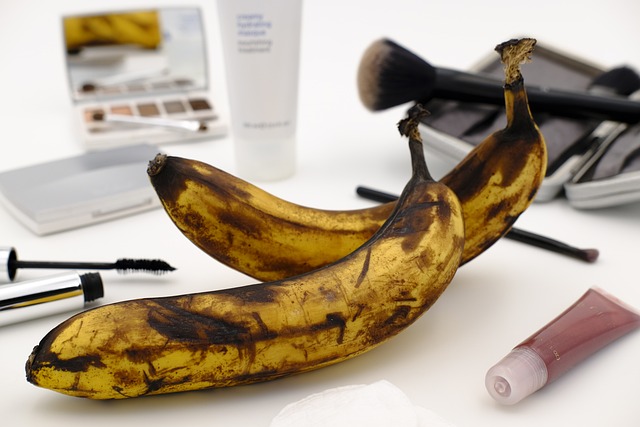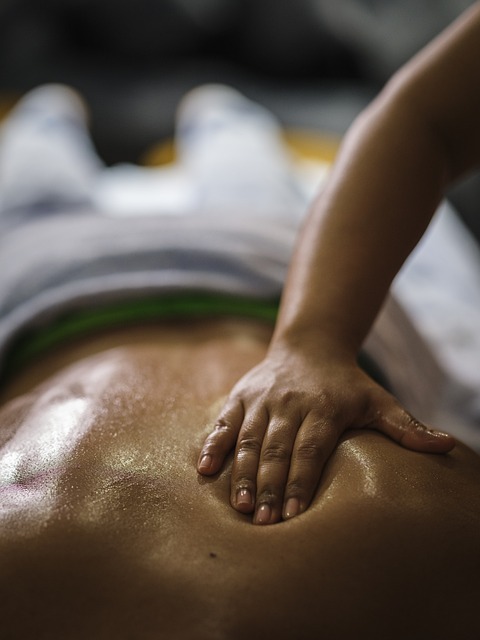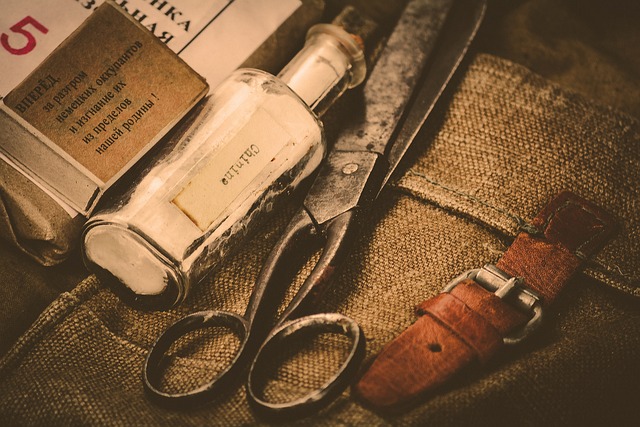Understanding wrinkle science is key to effective anti-aging treatments. The process involves addressing degradation of collagen and elastin, accelerating by sun, pollution, and smoking. Key strategies include stimulating collagen production, targeting tissue breakdown enzymes, and advanced technologies like retinoids, peptides, and growth factors. A successful approach blends hydration and antioxidant protection. Topical creams and serums with retinol, hyaluronic acid, and peptides are powerful. In-clinic options like Botox, dermal fillers, chemical peels, microdermabrasion, and RF therapy offer quick, non-invasive solutions. Balanced diet, healthy lifestyle, stress management, and natural remedies complement professional treatments. Advanced science and natural ingredients drive industry innovation.
Uncover the secrets to a youthful glow with our comprehensive guide to anti-aging wrinkle care. In this article, we demystify the science behind wrinkles, exploring factors that contribute to their formation and offering evidence-based solutions. From powerful topical creams and serums to advanced in-clinic procedures and lifestyle adjustments, discover key components of an effective anti-aging treatment plan. Learn about natural remedies, cutting-edge technologies, and non-invasive techniques to lift, tighten, and rejuvenate your skin, helping you achieve a radiant, ageless complexion.
Understanding the Science Behind Wrinkle Formation

Understanding the science behind wrinkle formation is key to effective anti-aging treatment. As we age, our skin’s collagen and elastin fibers naturally degrade, leading to a loss of elasticity and the development of fine lines and wrinkles. This process is accelerated by environmental factors such as sun exposure, pollution, and smoking, which can damage the skin’s surface and undermine its structural support.
Anti-aging treatments aim to counteract these effects through various mechanisms. Some focus on stimulating collagen production, while others target specific enzymes involved in tissue breakdown. Advanced technologies like retinoids, peptides, and growth factors are often utilized to enhance skin turnover, reduce inflammation, and promote the repair of damaged skin cells. By addressing the underlying causes of wrinkle formation, these treatments strive to achieve a more youthful and radiant complexion.
Key Components of Effective Anti-Aging Treatments

Effective anti-aging treatments are a combination of key components that work synergistically to reverse and prevent signs of aging. The first crucial element is hydration. Adequate hydration levels are essential for maintaining skin elasticity and a dewy, youthful appearance. Ingredients like hyaluronic acid, known for its ability to bind water molecules, are popular in anti-aging products due to their moisturizing benefits.
Another vital component is antioxidant protection. As we age, our skin produces fewer collagen and elastin fibers, leading to fine lines and wrinkles. Antioxidants such as vitamin C and E help combat oxidative stress caused by free radicals, which can damage these essential proteins. By neutralizing free radicals, these antioxidants foster a healthier skin environment, encouraging the production of collagen for a more firm and supple complexion.
Topical Creams and Serums for Daily Anti-Aging Routine

Incorporating topical creams and serums into your daily skincare routine is a powerful step towards effective anti-aging treatment. These potent formulations are designed to target specific concerns, such as fine lines and wrinkles, while also promoting skin hydration and elasticity. The key lies in choosing products that contain active ingredients like retinol, hyaluronic acid, and peptides, which have all been clinically proven to reduce the appearance of aging.
Retinol, a derivative of vitamin A, is a popular anti-aging ingredient as it encourages cell turnover, smoothens skin texture, and minimizes wrinkles. Hyaluronic acid, on the other hand, is a hydrating powerhouse, capable of holding 1000 times its weight in water, which plumps and nourishes the skin. Peptides are another powerful tool, stimulating collagen production to firm and lift the skin, leaving it looking rejuvenated and supple.
In-Clinic Procedures to Reduce Visible Signs of Aging

In-clinic procedures have emerged as a popular and effective way to combat the visible signs of aging. One of the most sought-after anti-aging treatments is Botox, which temporarily paralyzes facial muscles, reducing the appearance of fine lines and wrinkles. This non-invasive procedure is quick, usually taking just 15-30 minutes, and offers immediate results that can last for several months.
Another popular option is dermal fillers, which enhance the skin’s elasticity and volume by injecting a substance beneath the surface. These fillers can smooth out deep wrinkles, enhance facial contours, and provide a more youthful appearance. Clinics often offer a range of filler options, including hyaluronic acid-based fillers, to cater to different patient needs and budgets. Both Botox and dermal fillers are minimally invasive, offering fast recovery times and significant improvements in skin texture and tone.
The Role of Diet and Lifestyle in Combating Wrinkles

In the quest for youthful skin, many people often overlook one of the most powerful tools in their arsenal: diet and lifestyle choices. A balanced, nutrient-rich diet plays a pivotal role in anti-aging treatments as it provides the building blocks necessary for collagen production and skin repair. Foods rich in antioxidants help protect the skin from environmental damage caused by free radicals. Additionally, staying hydrated is essential as water contributes to skin elasticity and a plumper appearance.
Regular physical activity is another key component. Exercise increases blood flow, delivering oxygen and nutrients to the skin while removing toxins. It also boosts collagen production, resulting in smoother, firmer skin. Furthermore, managing stress levels can have profound effects on skin health. Chronic stress can lead to inflammation, which accelerates aging. Incorporating relaxation techniques into your lifestyle may help combat this effect, keeping your skin looking its best.
Advanced Technologies in Anti-Aging Skin Care

The realm of anti-aging skincare has seen a surge in innovative technologies, offering advanced solutions for maintaining youthful skin. One of the most prominent game changers is the integration of cutting-edge science with natural ingredients. For instance, professional-grade anti-aging treatments now incorporate potent peptides and growth factors that stimulate collagen production, revolutionizing the way we combat wrinkles and fine lines.
Additionally, technologies like LED light therapy and microneedling have gained traction in dermatological practices. These non-invasive procedures use specific wavelengths of light to target various skin concerns, including aging signs. Microneedling, in particular, creates a controlled injury response, encouraging the skin’s natural healing process and enhancing its ability to absorb active ingredients, thus boosting the effectiveness of anti-aging treatments.
Natural Remedies and Home Treatments for Younger-Looking Skin

Many people opt for natural remedies and home treatments as a gentler approach to anti-aging wrinkle care. These methods often use ingredients found right in your kitchen, offering a cost-effective and accessible way to achieve younger-looking skin. For instance, honey and aloe vera are popular choices due to their moisturizing properties and ability to soothe the skin.
The antioxidants in green tea are another powerful tool against aging. Regularly applying green tea bags as compresses can reduce fine lines and improve skin elasticity. Additionally, certain essential oils like lavender and rosehip oil have anti-inflammatory properties and are rich in vitamins, providing a natural boost to your skincare routine. These simple, at-home practices can complement more intensive anti-aging treatments while promoting healthy, radiant skin.
Exploring Chemical Peels and Their Benefits

Chemical peels have emerged as a popular anti-aging treatment, offering a non-invasive way to rejuvenate the skin. These treatments involve applying a chemical solution to the skin, which gently removes the top layer of cells, revealing smoother, more youthful-looking skin below. One of the key benefits is their ability to reduce the appearance of fine lines and wrinkles by stimulating collagen production. As we age, our skin’s natural collagen production slows down, leading to loss of elasticity and a more wrinkled complexion. Chemical peels can help counter this process by exfoliating dead skin cells and encouraging the body to generate new collagen fibers.
Additionally, these peels can address various skin concerns, such as hyperpigmentation, acne scars, and rough texture. Different chemical compounds, like glycolic acid, salicylic acid, or lactic acid, are used for specific effects. Glycolic acid, a common alpha hydroxy acid (AHA), is excellent for breaking down dead skin cells and improving texture. Salicylic acid, a beta hydroxy acid (BHA), penetrates pores to unclog them and reduce acne scars. With regular treatments, chemical peels can provide long-lasting results, making them an appealing option for those seeking effective anti-aging solutions without surgery.
Non-Invasive Ways to Lift and Tighten the Skin

Non-invasive procedures have emerged as a popular and effective way to lift and tighten the skin, offering a younger appearance without the need for surgery. One such treatment is microdermabrasion, which gently exfoliates the top layer of skin, promoting cell turnover and revealing smoother, brighter skin beneath. This process also helps unclog pores and removes fine lines and wrinkles by stimulating collagen production.
Another innovative anti-aging treatment is radiofrequency (RF) therapy, which uses targeted heat to stimulate collagen and elastin fibers. RF devices can safely and effectively lift and tighten loose skin, providing a more defined jawline and reduced appearance of jowls or turkey neck. These non-invasive techniques offer significant advantages over surgical options, including quicker recovery times and minimal downtime, making them attractive choices for those seeking youthful-looking skin.
